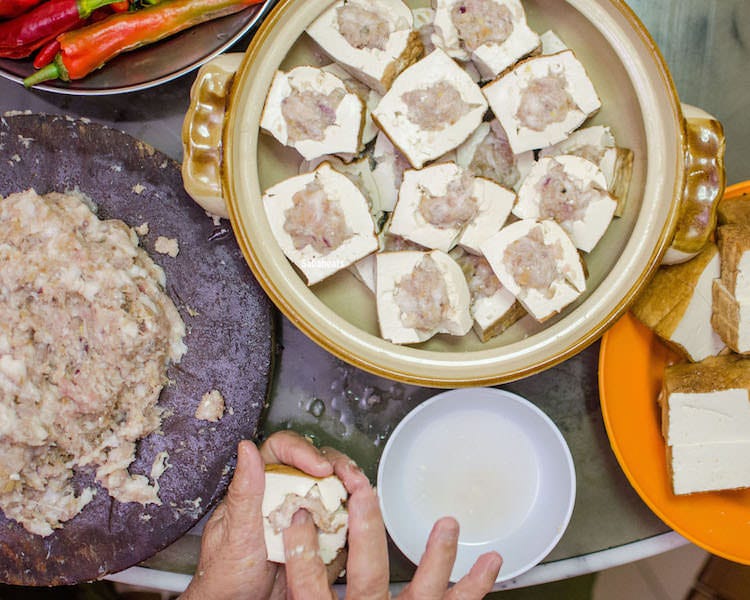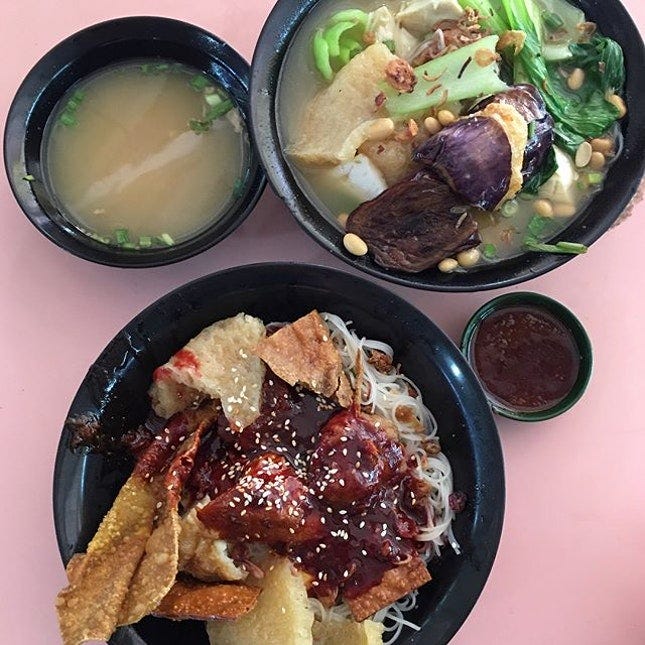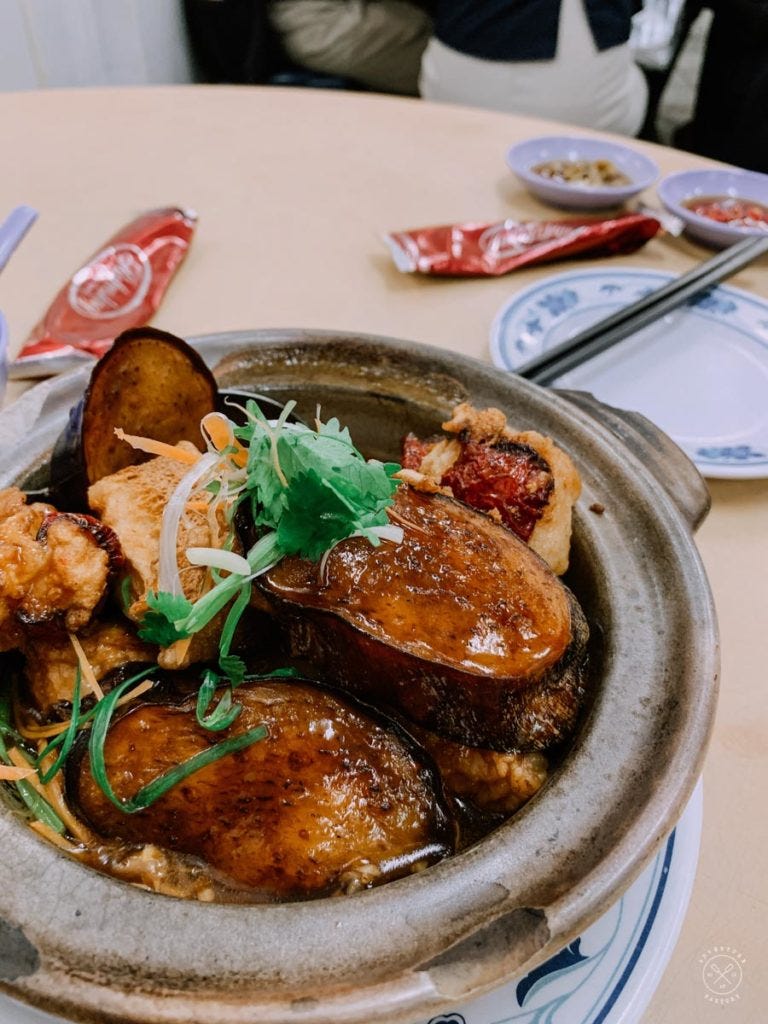Gong hei fatt choy! It is Lunar New Year, and to celebrate, I made a big batch of Hakka yong tau foo to enjoy with our reunion dinner steamboat last Thursday. When Wex and I told my in-laws what we were eating to celebrate, they found it very amusing. Wex later explained that, to the Chinese, Chinese New Year is a time where food is used as a display of wealth, and yong tau foo is perceived as a lowly peasant dish (probably because you can get it relatively cheaply at the hawker centres).
However, this is an incredibly symbolic dish to the Hakkas, who view yong tau foo as an essential part of any feast or banquet. Foo in the Hakka dialect is a homophone for ‘wealth’ and no banquet is complete without yong tau foo.
This dish is commonly written as 酿豆腐 (niang dou fu in Mandarin or niong tau foo in the Hakka dialect). This word 酿 ‘niang’ means ‘to ferment’ - thus often leading to confusion by many Chinese who may not be familiar with the dish, thinking that it is a dish of fermented tofu. Similar to how thunder tea rice earns its name through a mistranslation of a Chinese word, the wrong Chinese word is used in the writing of this dish’s name. The correct word is 秧 (yong in the Hakka dialect), which means ‘to plant a seedling in the middle of a hole’.
The Hakkas 客家人 (lit guest people) migrated from Northern China to Southern China, where they remain as “guests”, not having a permanent place to call home. Being Northerners, they were accustomed to having dumplings and paus with meat fillings as a staple. They found it difficult to procure wheat flour after migrating South-ward because rice, rather than wheat, is the main crop grown in the South. As an expression of their homesickness, they improvised by stuffing the filling into tofu, the white colour of which being similar to the dumpling skin.
The whole process of making Hakka yong tau foo was traditionally a communal one - members of the family would share in the labour involved, including making the tofu. The collective act of making Hakka yong tau foo is a symbol of cohesion and harmony in the family.
To enhance the taste and fragrance, salted fish was traditionally added to the pork filling. Later, when the Hakkas migrated to Malaysia and Singapore, fish was added to the mix or completely substituted the pork. The reason that the traditional pork stuffing evolved to a fish paste stuffing is contentious, but it is suggested that a key reason is attributed to the large Muslim population in Singapore and Malaysia, that abstains from pork. Others say that the use of fish could be a result of influence from the Teochews in the Nanyang region, who were adept at making fish balls.
The Hakkas also began experimenting with local vegetables such as chilli, bittergourd and okra. The Cantonese influence to yong tau foo lies in the sweet sauce that is used to dress the noodles and stuffed ingredients. This sweet sauce is similar to what the Cantonese use in chee cheong fun.
The style of Ampang yong tau foo was later popularized by a restaurant called Chew Kuan in the 60s, located in Kuala Lumpur’s Ampang. This version involves frying the stuffed items and then serving them with a thick, braised sauce. The famous braised yong tau foo at Kok Sen is said to be derived from the Ampang version.
Hakka yong tau foo
I used a 1:1 ratio of good, fatty pork and fish paste and seasoned the mix with haebee (dried shrimp), dried cuttlefish and freshly ground teepoh (dried solefish). It was backbreaking work - I had to take some breaks in between - but the result was totally worth it! The good thing is that it freezes really well and, when dropped into a bowl of soup, makes you feel like you’re home. Btw for those asking, the chilli recipe is in this Youtube video but not on the site just because it is not a traditional accompaniment to Hakka yong tau foo.





